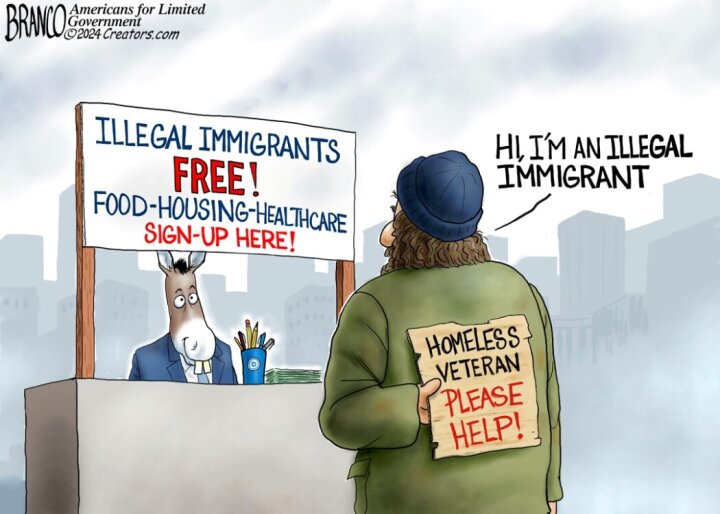Understanding the effects of the government shutdown on healthcare
Understanding the effects of the government shutdown on health care. To be a republic, even worse, to be a maga Republican and follow Donald Trump is just pure evil. There is no other way to explain it.
With a government shutdown underway in October 2025, the primary risk to the Affordable Care Act (ACA) is the potential expiration of enhanced premium subsidies, which could cause a major increase in health insurance costs for millions of Americans. While ACA coverage and the annual Open Enrollment period will continue in the short term, the political stalemate over funding for the enhanced subsidies is a central driver of the shutdown.
Immediate and short-term effects
ACA coverage continues: The ACA is funded through mandatory spending, so current coverage for the more than 24 million enrollees will not vanish during the shutdown.
Benefits and provider payments continue: Like other mandatory spending programs such as Medicare and Medicaid, doctors and hospitals will continue to receive payments for services.
Open Enrollment proceeds: The annual Open Enrollment period, which begins on November 1, will proceed as scheduled on HealthCare.gov and state marketplaces. Marketplace operations will continue to run using previously collected user fees from insurers.
Limited customer service: The Centers for Medicare & Medicaid Services (CMS) is operating with a reduced staff due to furloughs. This could complicate services and limit technical assistance for marketplace enrollees, though eligibility verification will continue.
Long-term effects and subsidy expiration
Potential premium hikes: The most significant threat is the expiration of the enhanced premium tax credits, which were expanded in 2021 and are set to expire at the end of 2025. If Congress does not extend these subsidies, millions of marketplace enrollees could face much higher premiums for 2026.
KFF analysis: According to an October 2025 KFF (Kaiser Family Foundation) analysis, average out-of-pocket premium payments for subsidized enrollees are projected to increase by 114%, from $888 to $1,904 in 2026.
Impact on enrollment: The Congressional Budget Office (CBO) estimates that nearly 4 million people could lose their coverage for 2026 without the tax credits.
ACA subsidies are a key sticking point: The fate of the ACA subsidies is a central point of contention in the shutdown.
Democrats' position: Democrats are pushing for an extension of the subsidies, arguing that premiums will skyrocket without them.
Republicans' position: Some Republicans oppose extending the enhanced subsidies, arguing they were intended to be temporary during the pandemic.
Broader health system effects
Disrupted health programs: A prolonged shutdown could interfere with various health-related services, including inspections, certifications, and certain public health programs.
Affected telehealth and ambulance services: Expiring funding and waivers could impact Medicare's expanded telehealth authority and reduce payments to ambulance services, potentially affecting rural patients.
Delayed payments to providers: While payments will continue in the short term, a longer-term shutdown could cause delays in payments to healthcare providers.
With a government shutdown underway in October 2025, the primary risk to the Affordable Care Act (ACA) is the potential expiration of enhanced premium subsidies, which could cause a major increase in health insurance costs for millions of Americans. While ACA coverage and the annual Open Enrollment period will continue in the short term, the political stalemate over funding for the enhanced subsidies is a central driver of the shutdown.
Immediate and short-term effects
ACA coverage continues: The ACA is funded through mandatory spending, so current coverage for the more than 24 million enrollees will not vanish during the shutdown.
Benefits and provider payments continue: Like other mandatory spending programs such as Medicare and Medicaid, doctors and hospitals will continue to receive payments for services.
Open Enrollment proceeds: The annual Open Enrollment period, which begins on November 1, will proceed as scheduled on HealthCare.gov and state marketplaces. Marketplace operations will continue to run using previously collected user fees from insurers.
Limited customer service: The Centers for Medicare & Medicaid Services (CMS) is operating with a reduced staff due to furloughs. This could complicate services and limit technical assistance for marketplace enrollees, though eligibility verification will continue.
Long-term effects and subsidy expiration
Potential premium hikes: The most significant threat is the expiration of the enhanced premium tax credits, which were expanded in 2021 and are set to expire at the end of 2025. If Congress does not extend these subsidies, millions of marketplace enrollees could face much higher premiums for 2026.
KFF analysis: According to an October 2025 KFF (Kaiser Family Foundation) analysis, average out-of-pocket premium payments for subsidized enrollees are projected to increase by 114%, from $888 to $1,904 in 2026.
Impact on enrollment: The Congressional Budget Office (CBO) estimates that nearly 4 million people could lose their coverage for 2026 without the tax credits.
ACA subsidies are a key sticking point: The fate of the ACA subsidies is a central point of contention in the shutdown.
Democrats' position: Democrats are pushing for an extension of the subsidies, arguing that premiums will skyrocket without them.
Republicans' position: Some Republicans oppose extending the enhanced subsidies, arguing they were intended to be temporary during the pandemic.
Broader health system effects
Disrupted health programs: A prolonged shutdown could interfere with various health-related services, including inspections, certifications, and certain public health programs.
Affected telehealth and ambulance services: Expiring funding and waivers could impact Medicare's expanded telehealth authority and reduce payments to ambulance services, potentially affecting rural patients.
Delayed payments to providers: While payments will continue in the short term, a longer-term shutdown could cause delays in payments to healthcare providers.



